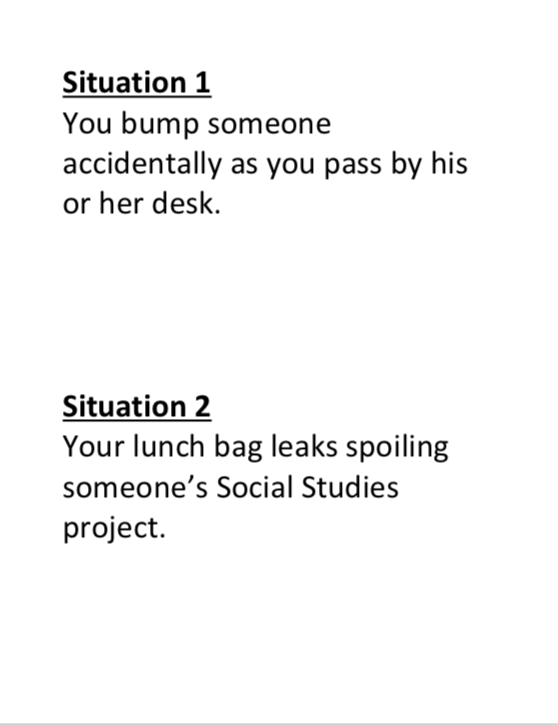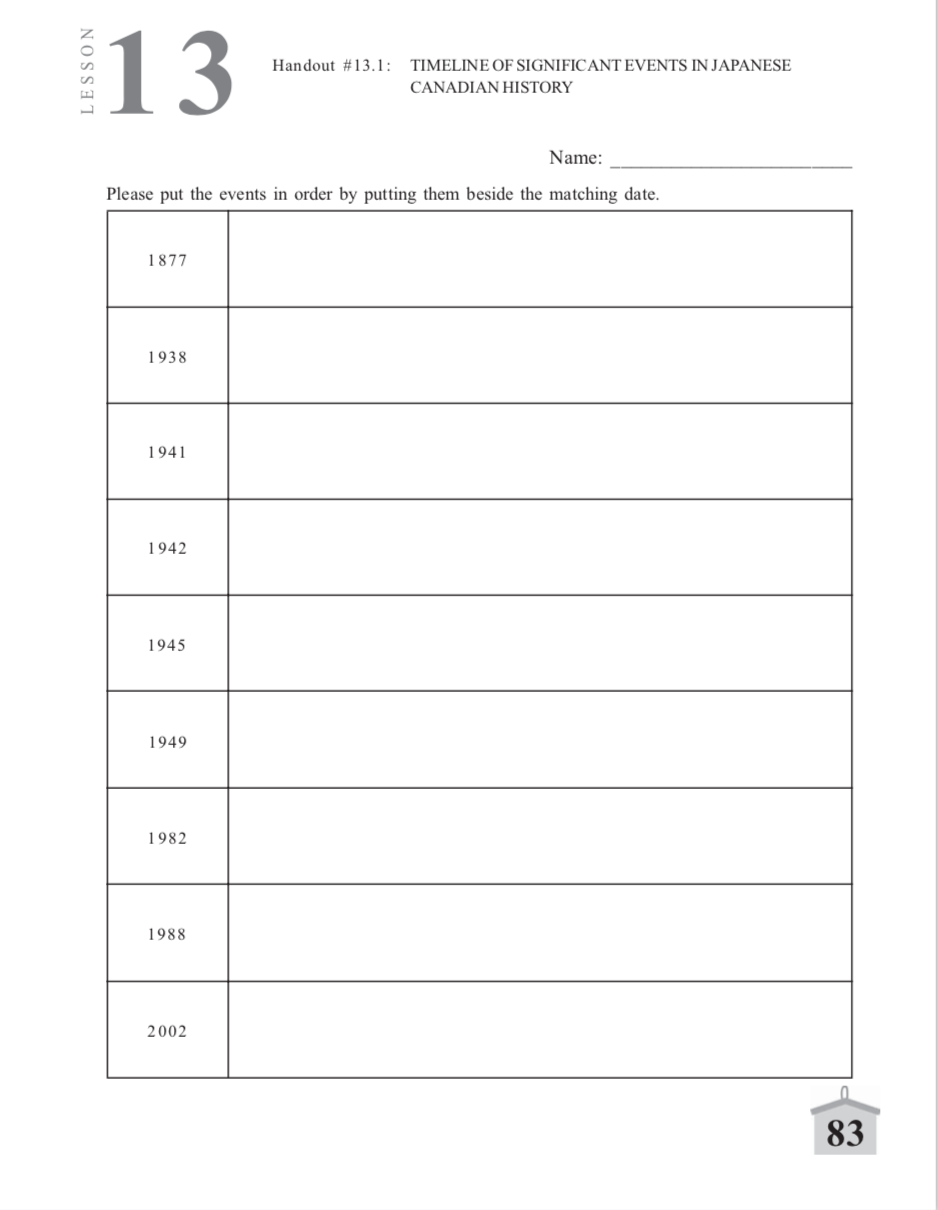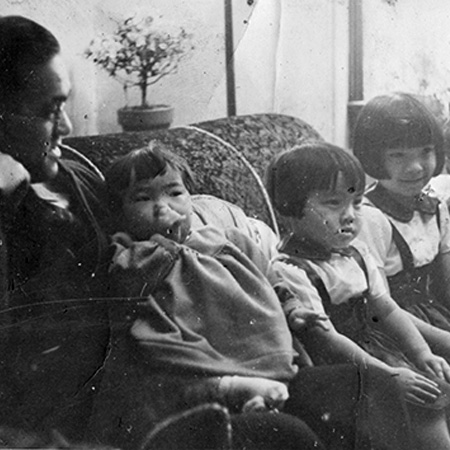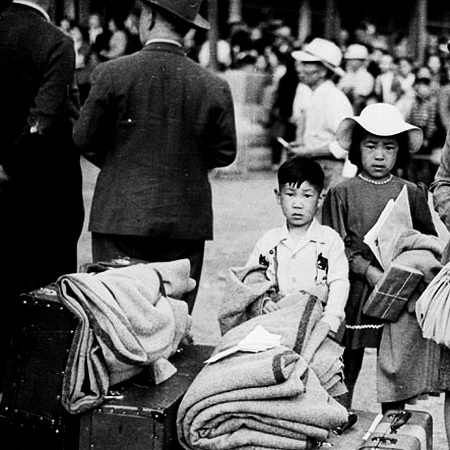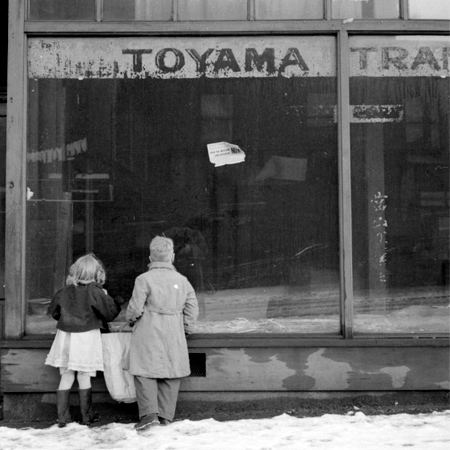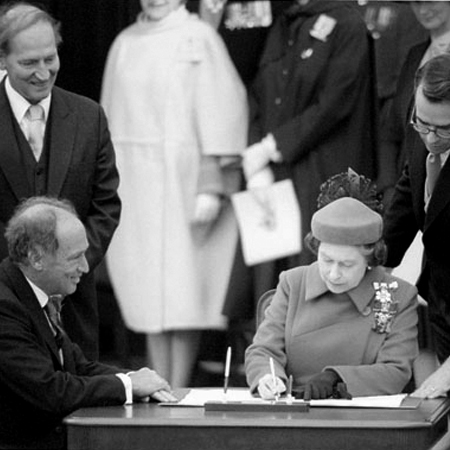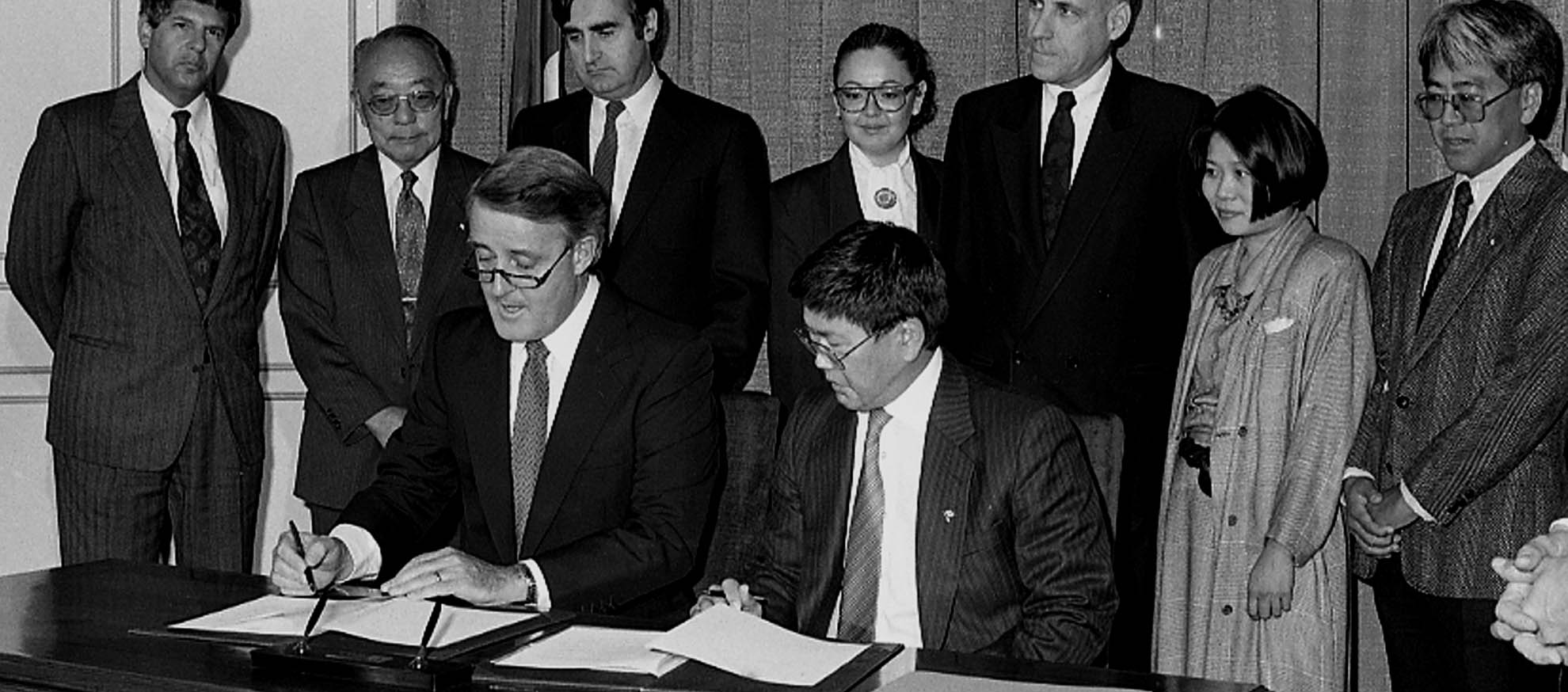
Lesson 8: Redress
Students assess a number of scenarios to determine whether a situation warrants an apology and how reparations could be made. They learn about redress for Japanese Canadians and evaluate whether the apology was appropriate.
How
- You could start the lesson with the PowerPoint.
- Introduce the Apology Chart.
- Divide students into small groups. Assign one situation from the Apology Chart to each group. Allow practice time. Each group role plays their situation for the class. After each situation, students determine if an apology is needed. Students record their answers on their chart. If an apology is needed, what kind of apology should it be (e.g. verbal, should the person do something for the other person, etc.)? Students fill in the whole chart, and discuss their answers with the class.
- During the role play, ask students if the situation would be any different if they were the victim in each situation.
- Discuss the injustices suffered by Japanese Canadians during wartime and later (1942 - 1949), for example having all of their homes and belongings sold off by the government, being put in prison camps, having fewer rights than other Canadians, having their families separated, being shipped off to Japan or Alberta, etc.
- Share the redress information with students - Acknowledgment In compensation, Japanese Canadians received an acknowledgment of the injustice of the wartime events; individual payments of $21,000 to eligible Canadians; establishment of a community fund of $12 million; clearing of criminal records for those charged under the War Measures Act; restoration of Canadian citizenship to those exiled to Japan; and the creation of the Canadian Race Relations Foundation, which was established in 1997.
- Point out and discuss with the students:
- Adults, even governments, make mistakes.
- Making this apology was difficult: It was a large mistake (it happened to a large group of people who lost a great deal). It was embarrassing for both the government (Canadians do not think of themselves as racist but as accepting of cultural diversity) and Japanese Canadians (they were the victims and they had to ask for an apology as none was offered). Show photo.
- It was a long time ago. Many people felt that "the past is the past." Prime Minister Brian Mulroney's speech in the House of Commons: "We cannot change the past. But we must, as a nation, have the courage to face up to these historical facts … to face up to the mistakes of the past, and so become better prepared to face the challenges of the future."
- The apology was symbolic. Though they did receive $21,000 each, Japanese Canadians did not get back everything they lost: "… no money can right the wrong, undo the harm, and heal the wounds. But it is symbolic."
- Prime Minister Brian Mulroney continued: “It was important for the government to "put things right between them (the Japanese Canadians) and their country (Canada); to put things right with the surviving members of the Japanese Canadian wartime community of 22,000 persons; to put things right with their children, and ours, so that they can walk together in this country, burdened neither by the wrongs nor the grievances of previous generations. And … our solemn commitment and undertaking to Canadians of every origin that such violations will never again happen in Canada."
- Discuss. (See suggested questions in Assessment Considerations).
- Students complete journal reflection. (See suggested journal reflection prompts in Assessment Considerations).
Assessment
GENERAL COMMENTS AND CONSIDERATIONS
-
As this is the last supporting lesson, it is important for students to think about the main recurring questions:
- What is my idea of fairness (now)? What can I do to help myself when I am not being treated fairly? How do I help others who are not being treated fairly?
- What was it like to lose your home, your possessions, and your community due to prejudice? How do you deal with this kind of loss?
SUGGESTED DISCUSSION QUESTIONS
- Was the apology necessary to Japanese Canadians? Why or why not?
- Was it the right kind of apology? Could Japanese Canadians have been treated differently? What alternatives would you suggest?
- What do I do when I make a mistake? How do I make things right?
SUGGESTED JOURNAL REFLECTION PROMPTS
- What do I do when I make a mistake? How do I make things right?
- What was it like to lose your home, your possessions, and your community due to prejudice? How do you deal with this kind of loss?
- Was the apology necessary to Japanese Canadians? Why or why not?
- Was it the right kind of apology? Could Japanese Canadians have been treated differently? What alternatives would you suggest?
Extensions
- To get a fuller understanding of the importance and the sequence of events, students can examine important historical events In Japanese Canadian history, and place them in order.
Determining Historical Significance "diamond": - We saw this wonderful activity by Anna Razzell and Chuck Baker at a workshop on Seixas and Morton'sThe Big Six Historical Thinking Concepts. Students rank parts from the history of Japanese Canadian internment and dispossession into a diamond chart in order of importance. Students do this individually and then share their rankings with partners or small groups, defending and adjusting their order. To train them to use this hierarchical diamond, students first use something more accessible to rank: elements from the story Cinderella.



